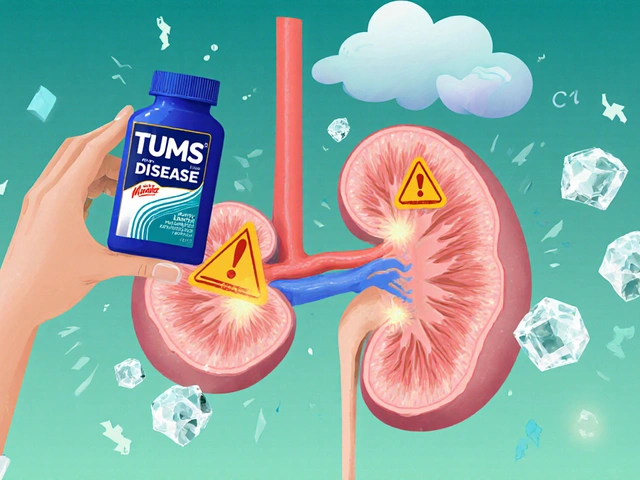Erosive Esophagitis and Anxiety: How They're Connected and What to Do
July 1 2023Mottled skin discoloration: what it is and why it shows up
Have you noticed a patchy, net-like or blotchy pattern on your skin that looks darker in places? That’s often called mottled skin discoloration. It can be harmless, like when you get cold, or it can be a sign of an underlying issue. This short guide helps you spot common causes, decide when to get checked, and try a few simple steps at home.
Common causes you can spot yourself
Some everyday causes are easy to test for. Cold exposure makes small blood vessels tighten, and that can create a lace-like discoloration called livedo from temporary reduced blood flow. Standing for long periods or poor circulation in the legs can produce a similar patchy look—venous stasis often comes with swelling and heavier legs. Certain medicines (like some blood pressure drugs or chemotherapy) and nicotine can also affect circulation and cause mottling.
There are also medical causes that need attention. Sepsis or low blood pressure can cause widespread skin mottling and feel cold or clammy. Autoimmune conditions and vascular problems sometimes show with persistent, irregular discoloration. If it comes with pain, numbness, or open sores, treat it as more serious until a clinician says otherwise.
When to see a doctor and what to mention
Get urgent care if the mottling appears quickly and you feel faint, very weak, short of breath, have a high fever, or severe pain. Those signs suggest poor blood flow or infection. Make a regular appointment if the discoloration is new but you feel fine, if it doesn’t fade after warming up, or if it’s spreading slowly.
At the appointment, tell your doctor exactly when it began, what you felt (pain, numbness, temperature changes), medications or new supplements you’re taking, and if you recently traveled or had an infection. Bring photos showing how the pattern changes over hours or days—those pictures can be very helpful.
Simple checks you can do at home: feel the skin temperature compared to nearby areas, press gently to see if the color blanches (fades) then returns, and check your pulse in the area if possible. If pulses are weak or absent, consider urgent care.
Basic self-care tips that often help: keep the area warm if cold exposure caused it, avoid smoking, elevate swollen legs, move regularly to improve circulation, and review medicines with your doctor. Don’t try home remedies that sting or irritate—keep the skin clean and moisturized.
If your doctor suspects a vascular or autoimmune cause, tests might include blood work, Doppler ultrasound, or referral to a specialist. Treatment varies: improving circulation, adjusting medications, or targeting an underlying disease.
Spotting mottled skin can be worrying, but most cases are manageable once the cause is known. If anything changes quickly or you don’t feel right, get medical help promptly—better safe than sorry.
 28 Apr
28 Apr
Microneedling for Mottled Skin Discoloration: Real Results and Surprising Perks
Curious about why microneedling is popping up as a go-to solution for mottled skin discoloration? This article breaks down what actually happens to your skin when you try microneedling, explains why it helps patchy uneven skin, and shares real tips for getting the best results. We’ll dig into what makes this treatment stand out, what to expect during recovery, and key things to ask a provider before booking. Handy do’s, don’ts, and practical facts included.
Read More...




